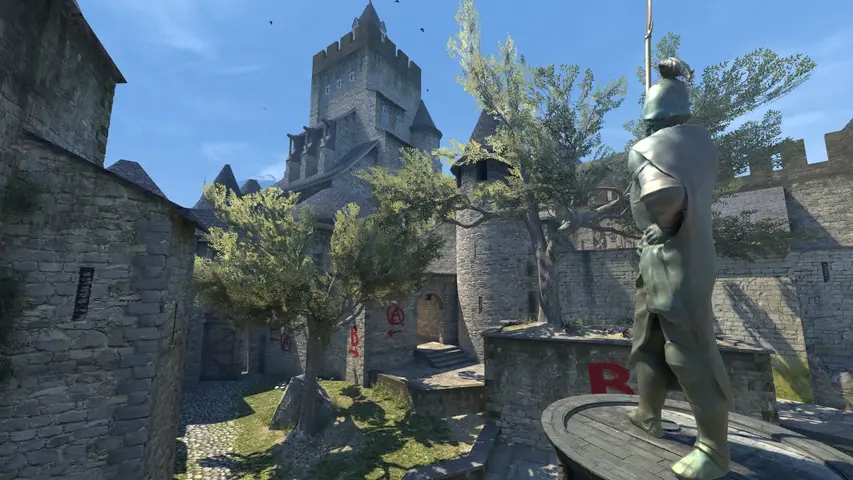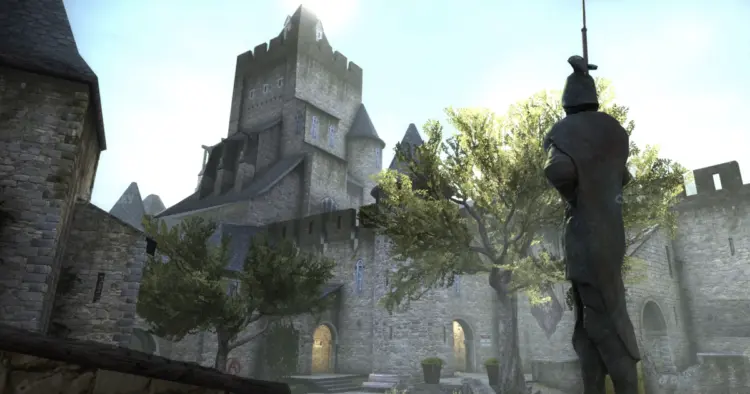
You think you want for Cobblestone to come back in CS2, but you don’t
The Counter-Strike 2 community is currently divided over the idea of reintroducing Cobblestone to the competitive map pool. While some players look back fondly on their experiences on Cobblestone, others are quick to point out the map's shortcomings in a competitive setting. As discussions around this topic heat up, especially after the conclusion of the first CS2 Major, it's crucial to take a closer look at Cobblestone's potential impact on the game's competitive landscape. This article aims to explore both the nostalgic appeal of Cobblestone and the practical considerations that come with its inclusion in the active map pool.
Nostalgia's bias
Nostalgia casts a powerful spell, often colouring our memories and desires. For many within the CS2 community, Cobblestone evokes a sense of longing for thrilling clutches and strategic plays that defined earlier eras of Counter-Strike. However, this sentimental yearning can cloud judgment, leading to a biased perspective that overlooks the map's inherent flaws in competitive play. While nostalgia can enrich our appreciation for the game's history, it's crucial to distinguish between the warm glow of fond memories and the cold light of competitive viability.

Comparative analysis
When juxtaposed with current staples in the CS2 map pool, Cobblestone's vastness and layout present stark contrasts. Maps like Nuke and Overpass, despite their comparable size, offer a more harmonious blend of engagement distances and strategically sized bombsites, contributing to a balanced and dynamic competitive experience. Cobblestone, with its expansive "fields" and elongated corridors, often resulted in protracted rotations and a gameplay pace at odds with the tight, tactical skirmishes that define the essence of CS2.
The map's design emphasised vast, open areas that, while visually impressive, diluted the intensity of engagements and strategic manoeuvring. This layout fostered a gameplay style that leaned heavily towards attritional play, particularly around the B site, reducing the map's overall strategic diversity. In contrast, Overpass skillfully navigates its similar size by weaving together varied engagement distances, creating a tapestry of tactical possibilities that Cobblestone struggles to match.
In assessing Cobblestone's place within the contemporary CS2 competitive scene, it's imperative to peel back the layers of nostalgia and critically evaluate the map's layout and design. Only by doing so can the community and developers ensure that the active map pool continues to reflect the strategic depth and dynamic gameplay that lie at the heart of Counter-Strike's enduring appeal.
Key issues with Cobblestone
Cobblestone's architecture, reminiscent of medieval battlegrounds, while aesthetically captivating, underscores several critical issues when placed under the competitive microscope of Counter-Strike 2. The map's sprawling layout, characterized by its wide-open spaces and lengthy corridors, fundamentally alters the pace and strategy of gameplay, often tipping the scales towards less engaging match dynamics.
The primary concern with Cobblestone lies in its size and design, which lead to extended rotation times and a pronounced emphasis on the B site for engagements. This imbalance not only narrows the strategic options available to teams but also makes the gameplay predictable, as teams frequently favour B site takes due to the inherent advantages it offers.
Furthermore, Cobblestone's limited utility usage exacerbates the issue, with few innovative smokes or flashes compared to other maps, leading teams to recycle tactics. This lack of variety in utility play diminishes the tactical depth that is a hallmark of Counter-Strike gameplay.

Another significant drawback of Cobblestone's design is the challenge it presents for retaking sites. The map's size and layout, with features like the one-way drop room, severely limit retake strategies, often resulting in rounds being decided by who secures site control first. This aspect of the map not only stifles the dynamic back-and-forth that makes CS2 matches so thrilling but also makes it less enjoyable for spectators, who are treated to a repetitive series of engagements.
Conclusion
The allure of Cobblestone, with its rich history and distinctive setting, is undeniable. However, the map's return to the competitive CS2 scene warrants careful consideration of its inherent design challenges and the impact on gameplay dynamics. While nostalgia for Cobblestone's epic battles remains strong, the evolving landscape of Counter-Strike 2 requires maps that support a balanced, strategic, and engaging competitive environment.
As the community reflects on the potential reintroduction of Cobblestone, it's essential to prioritize the elements that foster the intense, tactical gameplay Counter-Strike is renowned for. The future of the CS2 map pool lies in embracing maps that offer a harmonious blend of strategy, balance, and visual appeal, ensuring the continued growth and vibrancy of the competitive scene.
News info
Article
Related news
Upcoming Top Matches















Comments